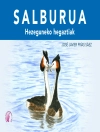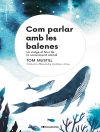In Habitats and Ecological Communities of Indiana, leading experts assess the health and diversity of Indiana’s eight wildlife habitats, providing detailed analysis, data-generated maps, color photographs, and complete lists of flora and fauna. This groundbreaking reference details the state’s forests, grasslands, wetlands, aquatic systems, barren lands, and subterranean systems, and describes the nature and impact of two man-made habitats—agricultural and developed lands. The book considers extirpated and endangered species alongside invasives and exotics, and evaluates floral and faunal distribution at century intervals to chart ecological change.
Inhaltsverzeichnis
Contents
Acknowledgments
List of Acronyms
Introduction
Part I – A Statewide Overview: Land Use, Soils, Flora and Wildlife
1. Land Use and Human Impacts on Habitats
2. Soils
3. Vascular Plants and Vertebrate Wildlife
Part II – Natural Habitats: Changes over Two Centuries
4. Forest Lands
5. Grasslands
6. Wetlands
7. Aquatic System
8. Barren Lands
9. Subterranean Systems
Part III – Man-Made Habitats: Changes over Two Centuries
10. Agricultural Habitats
11. Developed Lands
Part IV – Species Concerns: Declining Natives and Invading Exotics
12. Extirpated, Endangered, and Threatened Native Species
13. Exotic and Invasive Species
14. Species Scientifically Described from Indiana
Conclusion: Summary and Research Needs
Appendices
General information
Soils
Plants
Fishes
Amphibians and Reptiles
Birds
Mammals
Invertebrates
Maps created by ASTER
Glossary
Literature
Index
Über den Autor
John O. Whitaker, Jr., is Professor of Biology at Indiana State University and author of Mammals of Indiana (2nd edition with Russell E. Mumford, IUP, 2009); Mammals of Indiana: A Field Guide (IUP, 2010); Keys to the Vertebrates of the Eastern United States; and The Audubon Guide to Mammals of North America.












